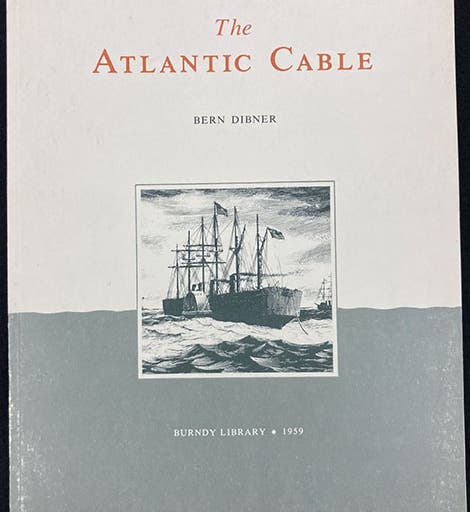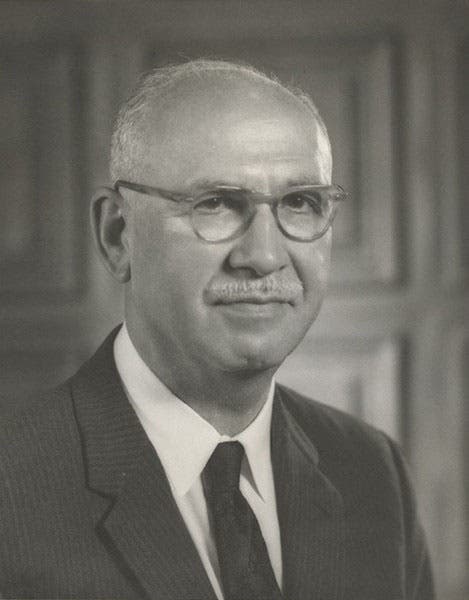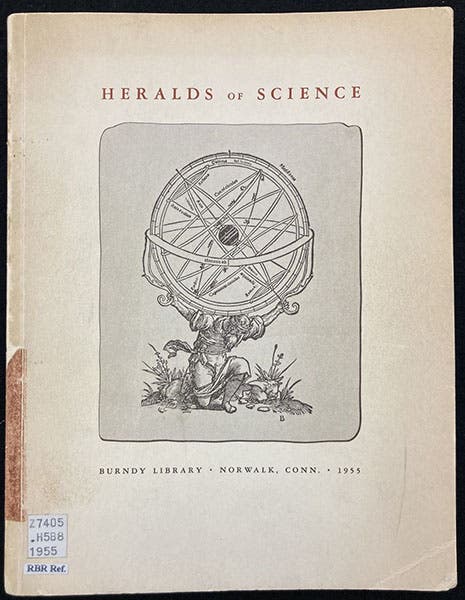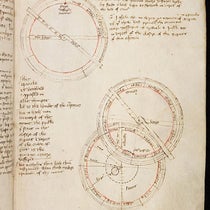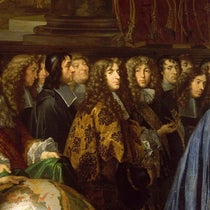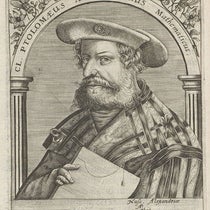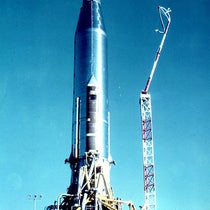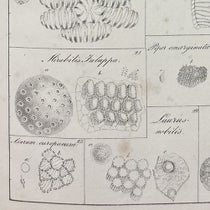Scientist of the Day - Bern Dibner
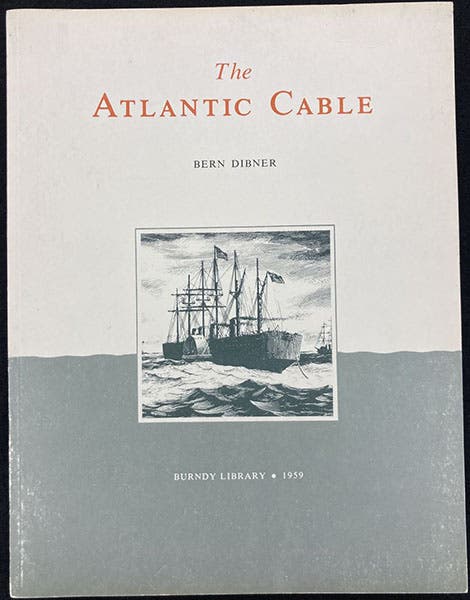
Paper front cover, The Atlantic Cable, by Bern Dibner, Burndy Library, 1959 (author’s copy)
Bern Dibner, a Ukrainian-born American engineer and manufacturer, died Jan. 6, 1988, at the age of 90. Dibner came to the United States as a child, studied electrical engineering in Brooklyn, and then founded his own electrical company in 1924. He did quite well at the business, making his mark by inventing solder-less electrical connectors, but somewhere along the way, he became interested in the history of science, and he started collecting.
At first he bought pamphlets and equipment related to his own field of electrical engineering, but soon he was buying everything he could find, and in the 1940s, there was a lot available, at bargain prices. He built up quite a library there in Norwalk, Connecticut, and he called it, after his company, the Burndy Library, a portmanteau of his first and last names. He incorporated the Library in 1946 and provided it with its own building.
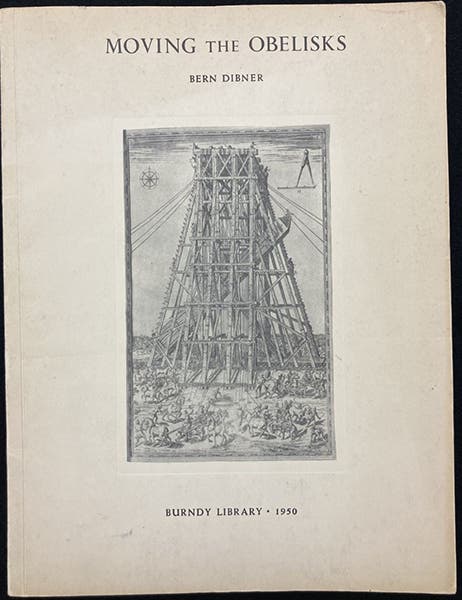
Paper front cover, Moving the Obelisks, by Bern Dibner, Burndy Library, 1950 (author’s copy)
Unusually for such a collector, he also turned himself into quite a competent historian, publishing all sorts of monographs, on such topics as the moving of the Vatican obelisk in 1588, the laying of the Atlantic Cable in 1858/66, or the discovery of X-rays in 1895, illustrating his books with images from his own collection. He even published a catalog of the pride of his collection, describing 200 books and pamphlets that he owned; he called the catalog Heralds of Science (1955), and it has since become a buying guide for many subsequent collectors. In 1983, the History of Science Society held its annual meeting at the Burndy Library in Norwalk, and I had the pleasure of meeting Mr. Dibner and seeing his collection.
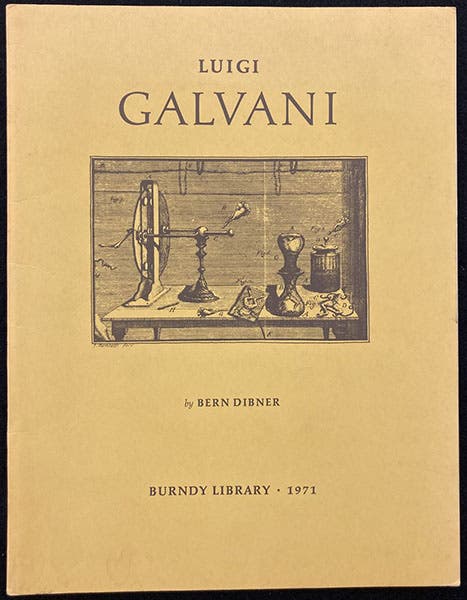
Paper front cover, Luigi Galvani, by Bern Dibner, Burndy Library, 1971 (author’s copy)
In 1974, Dibner gave a large number of his books (including the 200 Heralds of Science first editions) to the Smithsonian Institution, to jump-start their history of science rare book collection. After his death, the remainder of the Burndy Library went to MIT, where the Dibner Institute was founded in 1992. However, MIT declined to renew the arrangement, so in 2006, the Burndy Library moved to the Huntington Library in Pasadena, making the Huntington now quite a formidable rival to the Linda Hall Library in the areas of science and technology.
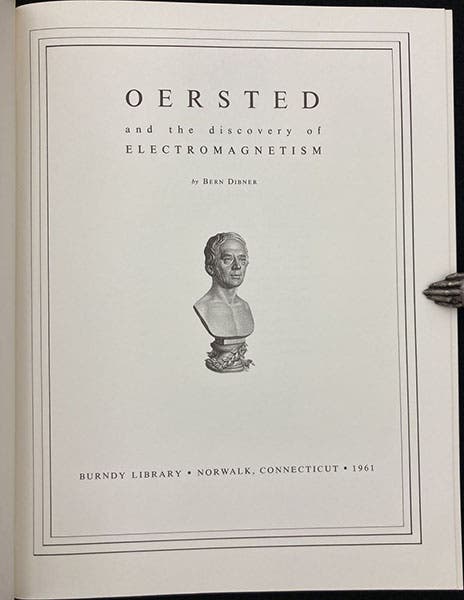
Title page, Oersted and the Discovery of Electromagnetism, by Bern Dibner, Burndy Library, 1961 (author’s copy)
I own a half-dozen of Dibner’s publications, and they are great resources, for they reproduce many ephemera images that you just cannot find in print elsewhere. The Linda Hall Library has all these and a dozen more. But my copies are in their original paper covers and unsullied by library markings, so I photographed my copies for display here. I do not own the Heralds of Science, so the image below is from our well-wom History of Science Reference Room copy.
The Smithsonian Libraries has a webpage about their Dibner Library, as they call it, which you can see at this link. They also maintain a digital vesion of Heralds of Science. The Huntington Library discusses their Burndy Library succinctly on their history of science webpage, and they have a separate entry on a collection of 100 early light bulbs that Dibner acquired in 1965. If the Huntington has a more extensive entry on Dibner, I did not find it.
William B. Ashworth, Jr., Consultant for the History of Science, Linda Hall Library and Associate Professor emeritus, Department of History, University of Missouri-Kansas City. Comments or corrections are welcome; please direct to ashworthw@umkc.edu.

